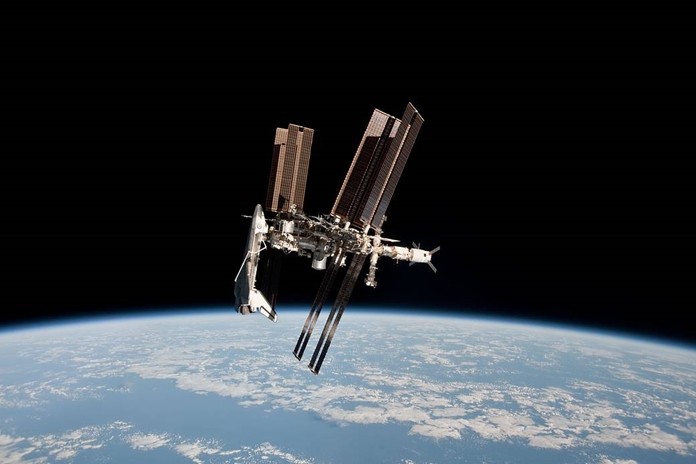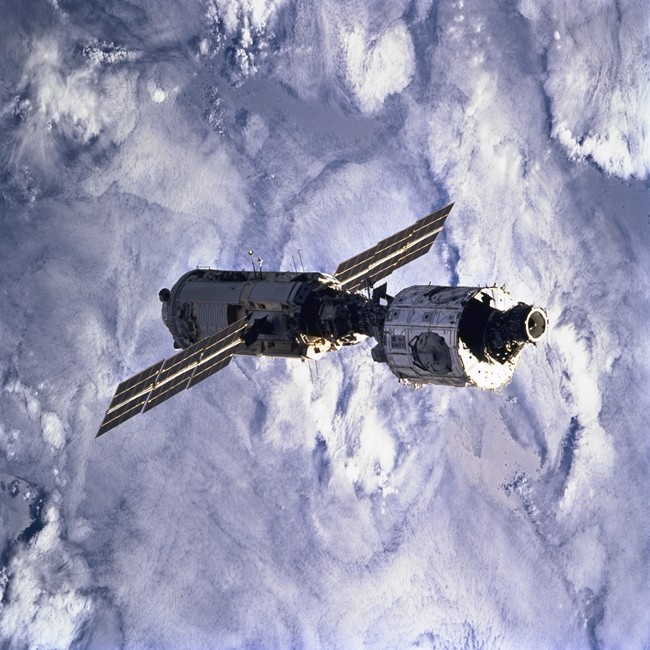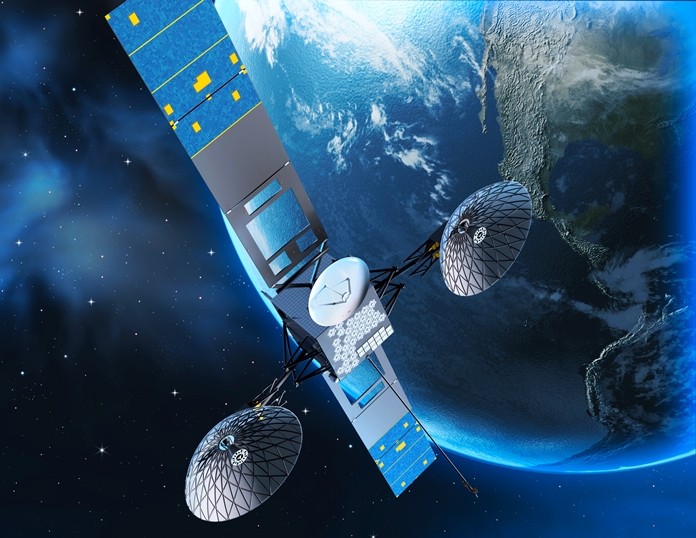
For 20 years, NASA has maintained a continuous human presence in space. The International Space Station — a marvel of cooperative engineering, science, and research — has made this incredible feat possible. Throughout the mission, NASA’s Space Communications and Navigation (SCaN) networks have connected station astronauts with loved ones on Earth and empowered profound research on the orbiting laboratory.
“As we celebrate 20 years of science and research aboard the station, we also celebrate the mission-enabling support infrastructure that makes it all possible,” said Robyn Gatens, acting director of the International Space Station at NASA Headquarters in Washington. “Space communications has always been a vital piece of NASA’s crewed missions in low-Earth orbit and beyond.”
Construction of the International Space Station in orbit began on Nov. 20, 1998, when the Zayra Module launched from the Baikonur Cosmodrome in Kazakhstan. Since then, the orbiting laboratory has been expanded and upgraded to meet the needs of astronauts living on the station and the science objectives of the mission.
Since Nov. 2, 2000, the space station has been occupied continuously by astronauts from NASA and international space organizations. The million-pound spacecraft has an internal pressurized volume equal that of a Boeing 747, providing living space for six-months long expedition crews of six people, while sometimes hosting up to 13 during crew rotations and shuttle visits.
NASA’s communications networks have made construction and occupation of the station possible. The station primarily relies on the constellation of Tracking and Data Relay Satellites (TDRS) and associated ground antennas. The orbiting laboratory sends its data to TDRS in geosynchronous orbit, which then relay that data to ground antennas at the White Sands Complex in Las Cruces, New Mexico and the Guam Remote Ground Terminal.
The orbiting laboratory also has a backup communications system. A series of very-high frequency (VHF) antennas around the world can provide astronauts with voice-only communications in the unlikely event of an emergency.

“NASA’s relay satellites provide the space station with robust, comprehensive services that keep our astronauts connected with mission control at all times,” said Network Services Division Director Susan Chang. “In combination with the redundant VHF network, TDRS assures the continued success and safety of the station.”
While the constellation of TDRS now provides near-continuous communications to low-Earth-orbiting missions, that wasn’t always the case. Until 1998, TDRS in two nodes provided coverage for 85% of the station’s orbit. NASA closed that “zone of exclusion” with the construction of the remote ground terminal in Guam, allowing communications with the station while over the Indian Ocean.
NASA continued to enhance the services that TDRS can provide the space station. Technicians have updated the space station’s software-based modem, improved data processors at various NASA centers, and enhanced routers, interfaces and other equipment and software at the ground stations. These modernization efforts have gradually increased the amount of data NASA can downlink from the station.

In 2016, the agency doubled the data per second that the station can transmit to 300 megabits per second. In 2019, NASA doubled the data rate again to 600 megabits per second — faster than most household fiber optic connections.
“The space station was designed in the 1990s. Recall our way of life then. A typical internet service provider had people to ‘dial up’ to get access to use of the internet. As the space station evolved with ever-advancing instruments, space communications evolved with timely innovations,” said SCaN Mission Commitment Manager John Hudiburg. “Investments in the ground segment have allowed us to keep pace with these needs, delivering more data to mission operations centers than ever before.”
Throughout its history, the space station has also served as a hub for communications research and development. From 2012 to 2019, the SCaN Testbed provided communications engineers with a platform to study space-based applications of software-defined radios. The Testbed researched innovations like cognitive communications, space-based GPS, and Ka-band communications.
The station has also tested revolutionary optical communications technologies that use infrared lasers to exceed data-rates offered by comparable radio systems. The Optical Payload for Lasercomm Science proved the practicality space-to-ground optical communications. The upcoming Laser Communications Relay Demonstration (LCRD) — launching in early 2021 — will test TDRS-like applications of optical communications with the station with the Integrated LCRD Low-Earth Orbit User Modem and Amplifier Terminal (ILLUMA-T). When operational, ILLUMA-T will complete the first end-to-end optical communications space relay system ever built.
In communications outreach, the space station has reached young people worldwide through amateur, or ham, radio. Amateur Radio on the International Space Station (ARISS) organizes contacts between astronauts on the station and students, encouraging them to pursue STEM interests and careers. ARISS is also celebrating its 20 year anniversary this year on Nov. 13.
Looking to the future, NASA is exploring opportunities to utilize commercialize communications services for the station. Rather than exclusively using government-owned relay satellites and ground stations, NASA’s SCaN program is aiming to demonstrate communication services provided by industry to supply the orbiting laboratory with additional bandwidth and to make those services available to other space users. Utilizing commercial infrastructure could mean lower costs and more robust services while bolstering the commercial space economy.
To learn more about SCaN visit: www.nasa.gov/SCaN
 |
 |
 |





